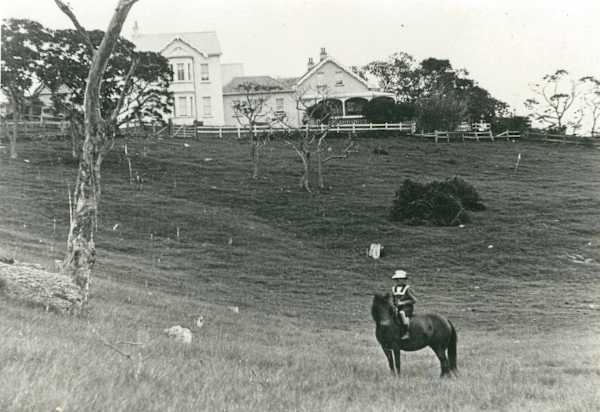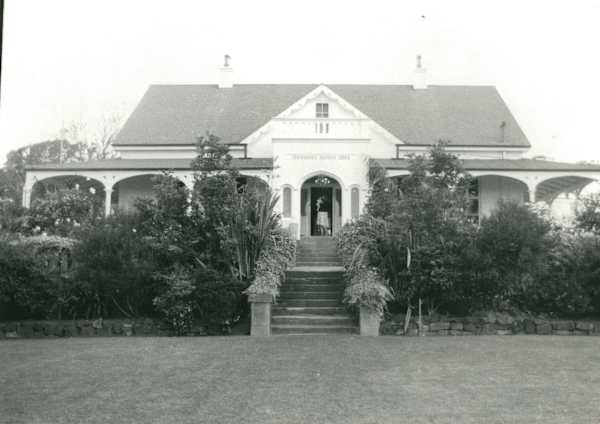By Tamara Hynd, curator of Shellharbour City Museum
Dunmore House, built on a rise beside the Minnamurra River, is arguably one of the Illawarra’s most beautiful historic homes. You catch glimpses of its elegance and grandeur as you pass it on the way south to Kiama.
George Laurence Fuller was the man responsible for its construction, and for the establishment of the Dunmore estate. His is a real ‘rags to riches’ story, and what a story it is.
On 12 August 1839, the Fuller family set off from County Galway, Ireland for reasons unknown. We can assume that they, like most other immigrants, wanted a better life for themselves and their children.
William and Ann had seven with another on the way when they set off for Australia; Elizabeth 15,
Thomas 13, William 10, Sarah 10, George 7, Annie 4, and Charlotte 2.
Their hopes and dreams of a living a new happy life together in a country full of opportunities were
not to be. Luck was not on their side.
Just 17 days before their arrival at Port Jackson, 27 November 1839, William died of typhus. A month earlier, Ann had given birth to a boy who survived just one day. They were both buried at sea.
The diseased North Briton arrived in Sydney 14 December 1839 and the passengers were removed
to quarantine. Ann was in an unknown country with unknown people. She had lost her premature
baby boy and her husband William, and her misfortune was not yet over. Her youngest daughter
Charlotte, just two years old, died of emaciation in quarantine.
Ann, 33, now had the task of taking care of her remaining six children.
Elizabeth who was 15 at the time, was employed as a nursemaid at Windsor. Thomas, William and
George were sent to the Male Orphan School at Liverpool. Sarah and Annie were sent to the Female
Orphan School at Parramatta. Their mother had no choice.
Ann made the decision to establish a shop-keeping business with the aim of earning enough money
to provide security for her children whom she was determined to get back.
Ann chose to settle in Wollongong, and in March 1840 she arrived there alone. She
selected a house with an attached shop on the corner of Corrimal and Market streets, and
successfully established a bakery.
Three months later, Ann was reunited with her children at Wollongong. She had successfully
petitioned the Governor for their release from the orphanages. Elizabeth continued to work as a
nursemaid and, three years later, married in Melbourne.
When George Laurence Fuller left school aged about 12 years, he helped his mother at her
Wollongong shop. When he was 22, he took a cargo of goods to the Victorian goldfields for sale
which proved a successful venture.
George was an entrepreneur. He worked as a commission agent in Sydney before selling the
business in 1858. He conducted the Boat Harbour Store at Gerringong and, in 1858, his mother Ann
was operating the post office from the same building.
The following year, George married Sarah Cunningham Miller of Renfrew Park, Gerringong.
In 1860, George next took on the Victoria Stores in Manning Street, Kiama, a business his brother
Thomas, and brother-in-law George Waldron, had established. He and Sarah lived upstairs.
Five years later, the southern section of the Peterborough estate at Shellharbour was advertised for
sale. George purchased the 2560 acres for £8658, well over one million dollars in today's money. He
named his estate Dunmore after his childhood home in County Galway.
In 1868, Ann died at her daughter’s home Pine Cottage at Kiama. She was 61 years old. 120
pedestrians and 200 riders took part in her funeral procession.
George sold the Victoria Store the same year and focussed on his Dunmore estate. Most of the
estate was leased to tenant farmers.

J & M Dinning, builders of Kiama, built Dunmore House for the family, on a portion of the estate they
had reserved.
The home was built of basalt and lime mortar made of shells. Basalt found on the estate was used to
construct the stone walls that still exist today. Cedar from the estate was used for the internal
joinery. Dunmore House took almost five years to build. The original part of the home consisted of
four main rooms downstairs, with attics above. A dining room and kitchen were added, making the
house a U shape. Servants’ quarters were built at the back, creating a square courtyard, that
included a deep well.
By 1880, George owned 9000 acres of the original Peterborough estate, extending from Lake
Illawarra to the Minnamurra River, and from the east coast to Croom in the west. He was one of the
largest landed proprietors on the South Coast.
George Laurence Fuller is noted for his generosity and vast contribution to Shellharbour’s
development. He set about helping his leaseholders clear and improve their farms. Many of his
tenants were Irish. George had a good relationship with them, even building houses for some to
improve their lot. The tenantry presented George and Sarah with an Illuminated Address on the
occasion of their Golden Wedding Anniversary in 1909. George in return, gave each tenant a
quarter’s rent. A new wing was built at Dunmore House especially for the anniversary occasion.
George gave land for the Minnamurra School, expanded the blue metal industry at Bass Point,
commissioned a steamer SS Dunmore for the basalt trade, built cottages for quarry workers,
donated land for the Shellharbour General Cemetery, was instrumental in establishing the School of
Arts in Mary Street, and established a racecourse at Albion Park Rail. He donated a beautiful pipe
organ to the Kiama Presbyterian Church, funded the completion of the church’s porch and tower,
and help build a fully equipped, up to date operating theatre at Kiama Hospital.

George and Sarah had 14 children: George Warburton, Robert Miller, William Frederick, Ada Annie,
Florence Elizabeth, Alfred Ernest, Sarah Emily, Edith Mary, Charles Laurence (died 5 months), Minnie Cunningham, Colin Dunmore, Archie Douglas, Bryan Cecil, and an unnamed baby who was born and died in 1889.
George Warburton became the Honourable Sir George Warburton Fuller, Premier of New South
Wales. Colonel Colin Dunmore Fuller DSO had a distinguished military career, receiving the Order of
the Nile, conferred by the sultan of Egypt for "distinguished services rendered in the course of the
campaign".
George Laurence Fuller’s last public appearance was to open the Sarah Fuller Memorial Ward at
Kiama Hospital in January 1917, a gift fully built and furnished by him, in honour of his wife who had
died four years before.
When George died later that year in his 85th year, his estate was valued at £155,928. That’s more
than $18,000,000 today. During his life at Dunmore, George supported every patriotic appeal and
gave thousands in every direction.
His obituary in The Daily Telegraph on 3 September 1917 said of him: "He will pass away in highest public esteem as an honoured citizen, whose works of charity and kindliness will stand as a memorial after many years to his name."
Not bad, George, not bad at all.

To find about more about the history of Shellharbour City, visit Shellharbour City Museum’s online
platform, Discover Shellharbour













